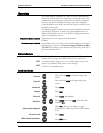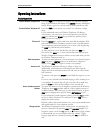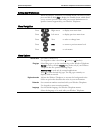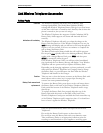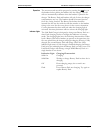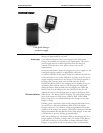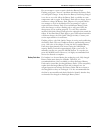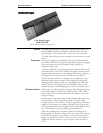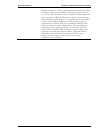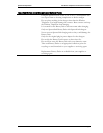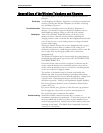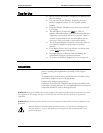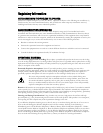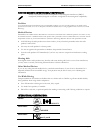
SpectraLink Corporation Link Wireless Telephones and Accessories User Guide
Regulatory Information
NOTE CONCERNING THE WIRELESS TELEPHONES:
This device complies with part 15 of the FCC Rules. Operation is subject to the following two conditions: (1)
This device may not cause harmful interference, and (2) this device must accept any interference received,
including interference that may cause undesired operation.
RADIO FREQUENCY (RF) INFORMATION:
This equipment generates, uses and can radiate radio frequency energy and, if not installed and used in
accordance with the instructions, may cause harmful interference to radio communications. However, there is
no guarantee that interference will not occur in a particular installation. If this equipment does cause harmful
interference to radio or television reception, which can be determined by turning the equipment off and on, the
user is encouraged to try to correct the interference by one or more of the following measures:
• Reorient or relocate the receiving antenna.
• Increase the separation between the equipment and receiver.
• Connect the equipment into an outlet on a circuit different from that to which the receiver is connected.
• Consult the dealer or an experienced radio/TV technician for help.
OPERATIONAL WARNINGS:
For Vehicles Equipped with an Air Bag: Do not place a portable radio product in the area over the air bag
or in the air bag deployment area. An air bag inflates with great force. If a portable radio is placed in the air bag
deployment area and the air bag inflates, the radio product may be propelled with great force and cause serious
injury to occupants of the vehicle.
Potentially Explosive Atmospheres: Turn off your radio product, prior to entering any area with a
potentially explosive atmosphere, unless it is a radio product type especially qualified for use in such areas (for
example, Factory Mutual Approved). Do not remove, install, or charge batteries in such areas. Sparks in a
potentially explosive atmosphere can cause an explosion or fire resulting in bodily injury or even death.
The areas with potentially explosive atmospheres referred to above include fueling areas
such as below decks on boats, fuel or chemical transfer or storage facilities, areas where the
air contains chemicals or particles, such as grain, dust or metal powders, and any other area
where you would normally be advised to turn off your vehicle engine. Areas with potentially
explosive atmospheres are often but not always posted.
Batteries: All batteries can cause property damage and/or bodily injury, such as burns if a conductive material
such as jewelry, keys, or beaded chains touches exposed terminals. The conductive material may complete an
electrical circuit (short circuit) and become quite hot. Exercise care in handling any charged battery, particularly
when placing it inside a pocket, purse, or other container with metal objects.
Cleaning and Drying Considerations Using a leather carry case may help protect the surfaces and help
prevent liquids (e.g., rain) from entering into the interior of the radio product. This product is not waterproof,
and exposing the unit to liquids may result in permanent damage to the unit.
If your Wireless Telephone interior gets wet, then do not try to accelerate drying with the use of an oven or a
dryer as this will damage the Wireless Telephone and void the warranty. Instead, do the following: 1.
Immediately power off the Wireless Telephone. 2. Remove Battery Pack from Wireless Telephone. 3. Shake
excess liquid from the Wireless Telephone. 4. Place the Wireless Telephone and Battery Pack in an area that is
at room temperature and has good airflow. 5. Let the Wireless Telephone and Battery Pack dry for 72 hours
before reconnecting the Battery Pack and/or powering on the Wireless Telephone. If the Wireless Telephone
does not work after following the steps listed above, contact your dealer for servicing information.
Part Number: 72-0035-51-I.doc Page 20



